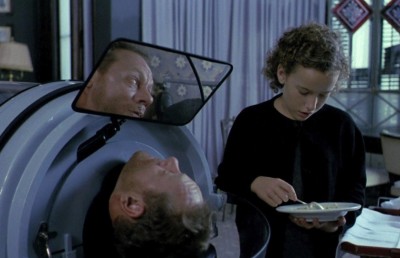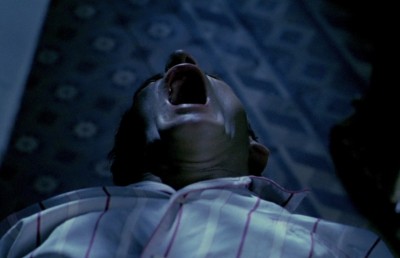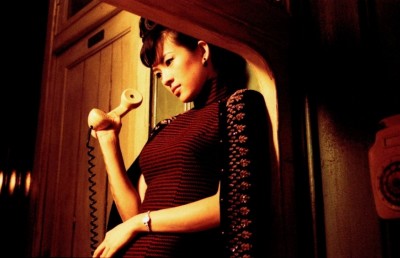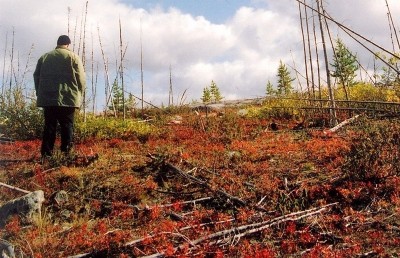Montreal, 2005: the Film Year in Review
The Best of Montreal
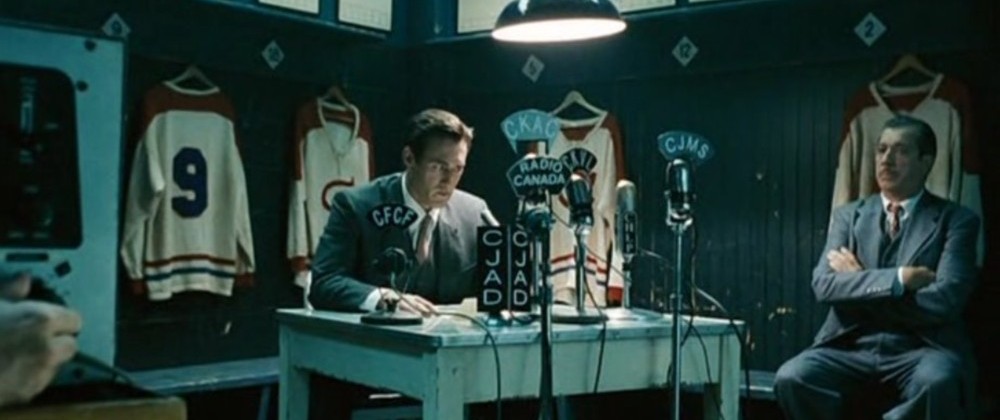

As in 2004, the two biggest film stories of the year in 2005 were the Montreal film festival “chaos” and the huge success enjoyed by locally made films at the Quebec box office. In 2004, films made in the province of Quebec grossed over $27million here, accounting for 13.6% of the total—a record high. This year the percentage has climbed to an amazing 17.8%! These statistics are even more remarkable when one realizes that, in the rest of Canada, local product hardly generates 1% of the total. As for the film festival scene, the year was marked by the absolutely disastrous inauguration of the “New Montreal Filmfest” (NMF) mounted by the Spectra Group (who are responsible for the Montreal Jazz Festival amongst other successful ventures) with enormous (financial) support from governmental and private agencies. The timing was bad—immediately following the Toronto International Film Festival (TIFF), which attracts almost all of the important new films—and, by all accounts, the director of the “New” festival, Spectra’s Alain Simard and the prestigious director of its programming, Moritz de Hadeln didn’t get along at all. As for the other major Montreal film festivals, Fantasia continued to be enormously popular with its predominantly young audiences, and remains Montreal’s #1 festival in my opinion, while somehow, against the odds, Serge Losique managed to find a few gems for his much-maligned World Film Festival (WFF). Everyone was talking about how good the Festival du Nouveau Cinéma (FNC) was this year, and it certainly drew the best selection of films, although, as usual, I had problems with it being primarily a showcase for films which are going to be released at the ExCentris cinema complex (where the festival screenings are focused). So far eight feature films which were shown at the FNC have been released at the ExCentris, including Capote, Arnaud Desplechin’s Rois et Reine and Jacques Audiard’s De battre mon cœur s’est arrête, while another eight are due to open early in the new year, including Michael Haneke’s Caché and the Dardenne brothers’ L’enfant.
It needs to be recognized though, that the ExCentris is still, by far and away the best cinema complex in Montreal, with the best projection and with most of the best new films being shown there. For anglophone Montrealers, the AMC Forum continues to provide a good selection of new films, and, although the quality of projection is far superior to that of the other downtown multiplex, the dreaded Paramount, one can sometimes hear the sound of another film emanating from an adjacent room at the AMC. If I lived closer to the Cinéma du Parc I would prefer to watch the same films there, and it is certainly unfortunate that their choices of new releases are so often duplicated at the AMC and sometimes, even, bounced by Famous-Players. I was very sorry to see them lose David Cronenberg’s A History of Violence to the Paramount. Indeed, from March through May, the programming at the Parc was exemplary, with numerous Asian films on view. All the more reason, then, to be sad that the year ended at the Parc with only three Hollywood films on the schedule, and nothing else. The Cinémathèque Québécoise continues to do well on an extremely limited budget. I especially appreciated the complete retrospective of Tsai Ming-Liang’s Taiwanese films in April, which was capped by an unofficial North American premiere of Tian bian yi duo yun (Un nuage au bord du ciel??/??The Wayward Cloud). This film was sold-out an hour before the screening, even though it couldn’t be publicized—its premiere had been promised to the Toronto International Film Festival! I also took advantage of the near-complete retrospective of Alexander Sokurov’s work, jointly mounted by the FNC from October to December. (Earlier in the year, a few of Sokurov’s documentaries had been shown to sold-out crowds at the Festival of Films on Art.) I should also note that Farbod Honarpisheh and André Habib programmed a wonderful series of (mostly) pre-revolutionary Iranian documentaries for the 8th Rencontres Internationales du Documentaire (RIDM) in November. Strangely, the festival was severely criticized for obtaining money from an Iranian cultural body in Ottawa to ship these rare films and videos from Iran, whereas the WFF gets financial support from Iran every year, without any complaints ever being leveled at them (for this, at least).
Sad to say, I had to travel to Sacile in Northern Italy in October to see 23 Japanese silent films and fragments shown at the 24th Giornate del Cinema Muto festival, most of which were encompassed by the tag “Shochiku 110 – Naruse 100.” Doubtless, none of the films in this series, which constituted the highlight of my film-viewing year, will ever show in Montreal, and, just to rub salt in the wounds, there is, currently, a major Mikio Naruse retrospective, staged by James Quant and the Cinematheque Ontario, touring the rest of North America. Overall, in 2005, retrospective screenings proved to be more rewarding than those of brand new works. The long-awaited release of Jean-Luc Godard’s Histoire(s) du cinéma occurred in May, at the Parc and the same theatre opened Electric Edwardians in October, a compilation of short, actuality films made from 1900 to 1906 in the North of England, the Midlands, Scotland and Northern Ireland by the Mitchell and Kenyon company, showing ordinary people with a greater degree of frankness than their better-known filmmaking compatriots in France and the USA. Remarkably, these ancient films, which were not known to exist until they were discovered by Peter Warden in 1994, have been restored (from 2000 to 2004) by the British Film Institute and the National Fairground Archive at the University of Sheffield, and now provide an amazingly clear and vivid time capsule of life in the early part of the 20th century.
Although 2005 was not a banner year for cinema, I saw one phenomenally great new film, directed by Hou Hsiao-hsien (who else?), and a number of excellent or very interesting new films. Following my suggestion last year that it might be useful to evaluate the significance of regional film production, I tip my hat this year to filmmakers working in Israel (and Palestine). I saw at least seven features from this deeply troubled corner of the world in theatrical release in 2005, including Keren Yedeya’s Or, mon trésor, a feminist, yet pessimistic work, Eran Riklis’ The Syrian Bride which won almost all the major awards at the 2004 edition of Montreal’s World Film Festival and Yaron Silberman’s moving documentary on a 1930s Jewish “ladies” swim team who return to Vienna for the first time, Watermarks. Most of the films were, strictly speaking, from 2004, but, the two best were from this year, Avi Mograbi’s documentary, Avenge But One of My Two Eyes, which suggests through associational montage that the roots of suicide bombing can be found in Jewish history (Masada) and myth (Samson) and the provocative fiction feature, Paradise Now directed by Palestinian-in-exile, Hany Abu-Assad.
It was yet another strong year for Chinese-language films, with “great” directors Wong Kar-wai (2046) and Jia Zhangke (The World) getting films theatrically released in Montreal, and with Tsai Ming-Liang’s sexually explicit The Wayward Cloud becoming a box-office hit in his native Taiwan! But 24 year-old Beijing Film Academy student Liu Jiayin’s Oxhide, the best “first feature” from anywhere for quite a few years, veteran Tian Zhuangzhuang’s beautiful digital documentary, Delamu (2004), Wong Kar-wai’s contribution to the portmanteau film, Eros, “The Hand” and Hou Hsiao-hsien’s Three Times were the real highlights, for me. Hou’s great new film was the only one of these to be screened in Montreal, but, knowing that his Café Lumière (my favourite film from 2004) had never screened in Montreal, I was not prepared to risk not seeing it at all, and I traveled to Toronto for the TIFF. Now that I’ve seen Three Times twice, I can confidently declare that Hou continues to be the most accomplished and original, active narrative filmmaker in the world.
Given all the talk about a disastrous Hollywood box office, it was a surprisingly good year for US film (especially if one considers Canadian David Cronenberg’s A History of Violence in this category) and if there is a “film person” of the year award it could easily go to George Clooney for directing Good Night and Good Luck, producing Syriana, and acting in both of them. I was also impressed by Gregg Araki’s Mysterious Skin (one of two remarkable features to be released in 2005 dealing with the delicate subject of pedophilia—the other being Pedro Almodóvar’s Bad Education) and Last Days provides yet another successful demonstration of Gus van Sant’s experimental approach to narrative film form. After the Dogme movement, begun in Denmark, looked to have run its course, Montreal distributors finally released a handful of titles from this country, which, with 25% of its box office receipts going to Danish films, shares Quebec’s (and South Korea’s) tendency to support its own cultural productions. I admired two digital works directed by Danish women, Annette K. Olesen’s Minor Mishaps (2001) and Susanne Bier’s Open Hearts (2002). Unfortunately, with little or no press coverage, they were gone in a flash—I was the only person in the theatre for Olesen’s film!—although Bier’s more recent Brothers had a decent run at the ExCentris. As for Korea, where the taste for its own films keeps getting stronger, it seems that the “art film” movement may have peaked three or four years ago. More Korean films were released in North America than ever before in 2005, but, surprisingly, two of the best, which had received festival exposure in Montreal in previous years, Sympathy for Mr Vengeance (2002), and Memories of Murder (2003) didn’t get released here. And, whereas I am very supportive of the commercial success received last year by such well-made Québécois films as C.R.A.Z.Y and Maurice Richard, I am more inclined to admire less-mainstream fare such as Louise Archambault’s first feature La familia, and Lucie Lambert’s beautiful Le père de Gracile (2004), which slips interestingly between the documentary and fictional modes.
Best ‘10’ (15) films shown in Montreal for the first time in 2005:
1) Three Times, Hou Hsiao-hsien [Taiwan] shown during the FNC
2) *??La Niña Santa??, Lucretia Martel [Argentina, 2004] in general release
2) Goodbye Dragon Inn, Tsai Ming-liang [Taiwan, 2003] shown at the Cinemathèque
2) *??A History of Violence??, David Cronenberg [Canada/USA] in general release
The Rest (in no particular order):
-??Breaking News??, Johnnie To —shown during Fantasia /*??2046??, Wong Kar-wai [both, Hong Kong, 2004] in general release
-*??Last Days??, Gus Van Sant —in general release /??No Direction Home??, Martin Scorsese, who now makes better television docs than theatrical feature films! [both, USA]
-??Les Artistes du Théâtre Brulé??, Rithy Panh [Cambodia/France] shown during the WFF
-??La maison est noire??, Forough Farrokhzad (1962)/ Tehran is the Capital of Iran, Kamran Shirdel (1965)/ P comme pélican, Parviz Kimiavi (1972) [Iran] as the “best shorts —shown during the RIDM
-??The Sun??, Alexander Sokurov [Russia/Italy/Switzerland/France] —FNC
-*??Avenge But One of My Two Eyes??, Avi Mograbi [Israel/France]/ *??Paradise Now??, Hany Abu-Assad [Palestine/Netherlands/Belgium/France] both in general release
The ‘Next’ Best films released in Montreal during 2005, in addition to the six marked () above*
1) Histoire(s) du Cinéma, Jean-Luc Godard [France, 1989–1994]
-??Le Père de Gracile??, Lucie Lambert [Quebec, 2004]
-??Open Hearts??, Susanne Bier (2001)/ Minor Mishaps, Annette K. Olesen (2002) [both Denmark]
-??Kung Fu Hustle??, Stephen Chiau [Hong Kong, 2004]/ Save the Green Planet, Jang Jun-hwan [Republic of Korea, 2003] as the most “entertaining” new releases



